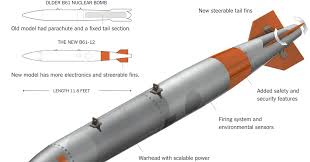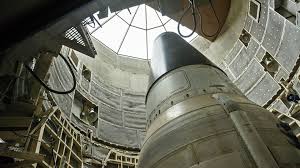The Silent Arsenal: A 2025 Snapshot of America's Nuclear Warhead Stockpile

Inside America’s Nuclear Arsenal: A 2025 Snapshot of Power, Policy, and Uncertainty
In the intricate calculus of global power, few assets carry as much weight—or remain as cloaked in secrecy—as a nation’s nuclear arsenal. As of early 2025, the United States maintains a formidable, if significantly reduced, stockpile of nuclear warheads—a Cold War legacy that continues to shape international security and deterrence dynamics.
While far from its historic peak, the U.S. arsenal remains a cornerstone of national defense strategy and a subject of close scrutiny by both allies and adversaries.
The Numbers Behind the Stockpile
According to the latest declassified figures from the U.S. Department of Energy, corroborated by independent estimates from the Federation of American Scientists (FAS), the United States possesses approximately 3,700 nuclear warheads as of 2025. This figure comprises both active and inactive warheads:
- 1,770 warheads are categorized as deployed, actively mounted on ICBMs, SLBMs, or stationed at strategic bomber bases.
- An estimated 1,930 warheads are in reserve, stored but available for potential reactivation.
- Over 1,400 retired warheads are queued for dismantlement, a slow and resource-intensive process managed by the National Nuclear Security Administration (NNSA).
This is a dramatic decline from the 1967 peak of over 31,000 warheads, reflecting decades of arms control agreements and unilateral disarmament measures.
Arms Control and the New START Deadline
The downward trend in arsenal size owes much to bilateral arms control agreements—most notably the Strategic Arms Reduction Treaty (START) and its current iteration, New START, which caps deployed strategic warheads at 1,550 for both the U.S. and Russia.
However, New START is set to expire in February 2026, and its future remains uncertain amid heightened geopolitical tensions. Whether the treaty will be extended, replaced, or allowed to lapse will have profound implications for the future size, posture, and policy framework surrounding the U.S. nuclear deterrent.
Warhead Composition: Strategic vs. Tactical
The American stockpile includes a variety of warhead types designed for different delivery platforms and missions, broadly divided into strategic and non-strategic (tactical) weapons.
Strategic Warheads:
These high-yield warheads are integral to the nuclear triad and include:
- W88 and W76-1/2 warheads, deployed on Trident II D5 submarine-launched ballistic missiles
- W87 warheads, currently mounted on Minuteman III ICBMs
- B61 gravity bombs and Air-Launched Cruise Missiles (ALCMs), deliverable by long-range strategic bombers
Tactical Warheads:
Although reduced by over 90% since 1991, the U.S. still maintains a limited inventory of tactical warheads, primarily:
- The B61 gravity bomb, particularly the B61-12 variant, featuring dial-a-yield capability and precision guidance—now compatible with dual-capable aircraft such as the F-35.
The deployment of low-yield options like the B61-12 has been a subject of strategic debate. Critics argue they may lower the threshold for nuclear use, while supporters see them as enhancing deterrence credibility by offering flexible, proportional response options.
Sustaining an Aging Arsenal Without Testing
Maintaining the reliability and safety of this aging warhead inventory is the central mission of the NNSA’s Stockpile Stewardship Program. Since observing a moratorium on live nuclear testing in 1992, the U.S. has relied on advanced simulations, high-performance computing, and subcritical experiments to assess warhead performance.
This non-explosive approach allows the U.S. to uphold test-ban commitments while ensuring that its nuclear forces remain safe, secure, and operationally effective. However, it also drives up the scientific and financial complexity of maintaining the arsenal over time.
Modernization and Strategic Outlook
The warhead inventory is a key element of the broader U.S. nuclear modernization program—an expansive and costly initiative now underway to upgrade delivery systems, command infrastructure, and supporting laboratories.
Programs such as the W87-1 warhead for the Sentinel ICBM and the W93 warhead for future SLBMs are part of the effort to extend the lifespan and reliability of the stockpile without resuming nuclear testing. Yet, these developments are not without domestic controversy and international concern, particularly in terms of cost, strategic necessity, and arms control implications.
Conclusion: A Delicate Balance of Deterrence and Diplomacy
As the United States navigates a new era of nuclear modernization, the size and shape of its warhead stockpile will remain central to its defense posture and to the global balance of power. Whether through treaty diplomacy, technical innovation, or strategic recalibration, the next chapter in America’s nuclear story will be shaped by decisions made in the critical months leading up to New START’s expiration—and beyond.
League Manager Editorial Team







Leave a Comment